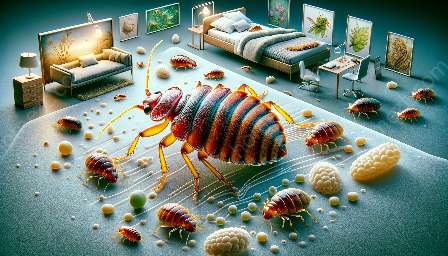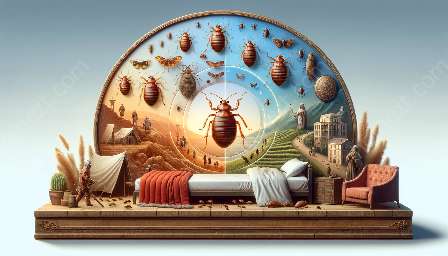Bed bug monitoring and surveillance play a crucial role in pest control efforts, as these techniques are essential for detecting, managing, and preventing bed bug infestations. In this comprehensive guide, we will explore the importance of effective monitoring and surveillance strategies, provide insights into key components of bed bug detection, and offer practical tips for ongoing surveillance to ensure your property remains free from bed bug infestations.
Understanding the Basics of Bed Bug Monitoring and Surveillance
Before delving into the specifics of bed bug monitoring and surveillance, it's essential to have a clear understanding of these concepts. Monitoring and surveillance are proactive techniques designed to identify the presence of bed bugs, track their movements, and assess the effectiveness of pest control interventions. By regularly monitoring and surveilling for bed bugs, property owners and pest control professionals can detect infestations in their early stages, preventing widespread infestations and minimizing the risk of extensive damage.
The Importance of Early Detection
Early detection of bed bugs is key to successful pest control. Due to their elusive nature and ability to hide in cracks and crevices, bed bugs can quickly multiply and spread within a property. Therefore, implementing proactive monitoring and surveillance measures is crucial for identifying bed bug infestations before they become unmanageable. Early detection also facilitates prompt intervention, minimizing the potential impact on occupants and preventing the need for costly remediation efforts.
Key Components of Bed Bug Detection
Effective bed bug detection relies on a combination of methods and tools to accurately identify the presence of these pests. Several essential components of bed bug detection include:
- Visual Inspections: Thorough visual inspections of potential harborage areas, such as beds, furniture, and baseboards, are essential for detecting live bed bugs, shed skins, fecal spots, and other telltale signs of infestation.
- Canine Inspections: Specially trained bed bug detection dogs can rapidly and accurately pinpoint the location of bed bug infestations, making them valuable assets in surveillance efforts.
- Bed Bug Monitors: Passive monitoring devices, such as interceptors, traps, and monitors, are effective tools for capturing and detecting bed bugs as they travel between their hiding spots and feeding areas.
- Use of Technology: Modern technologies, including infrared cameras and other advanced equipment, can aid in the identification and tracking of bed bug activity, enhancing surveillance capabilities.
Ongoing Surveillance and Monitoring Strategies
To maintain a pest-free environment, ongoing surveillance and monitoring are essential. By implementing the following strategies, property owners and pest control professionals can effectively manage and prevent bed bug infestations:
- Routine Inspections: Regular, systematic inspections of potential harborage areas are critical for detecting any signs of bed bug activity.
- Education and Training: Providing education and training to staff and occupants on the identification of bed bugs and proactive surveillance measures can significantly enhance detection efforts.
- Integrated Pest Management (IPM): Implementing an IPM approach, which combines proactive monitoring, preventive measures, and targeted treatments, can help mitigate the risk of bed bug infestations.
- Record Keeping: Maintaining detailed records of monitoring and surveillance activities, including findings and intervention measures, is essential for tracking and evaluating the effectiveness of pest control efforts.
Conclusion
Effective bed bug monitoring and surveillance are integral components of successful pest control programs. By understanding the importance of early detection, utilizing a variety of detection methods, and implementing ongoing surveillance strategies, property owners and pest control professionals can effectively manage and prevent bed bug infestations. By prioritizing proactive monitoring and surveillance, you can safeguard your property and ensure a pest-free environment for occupants and guests.






















